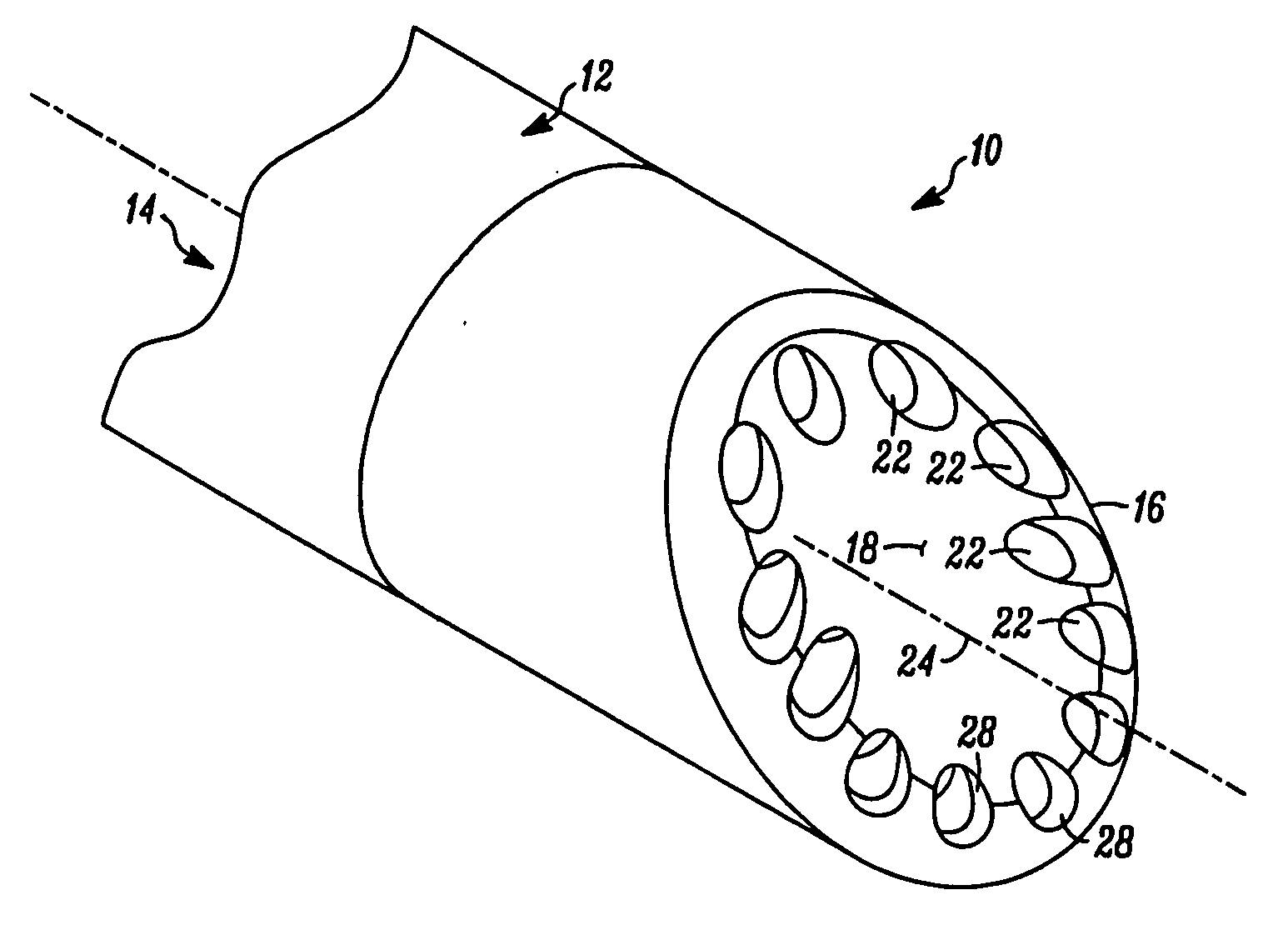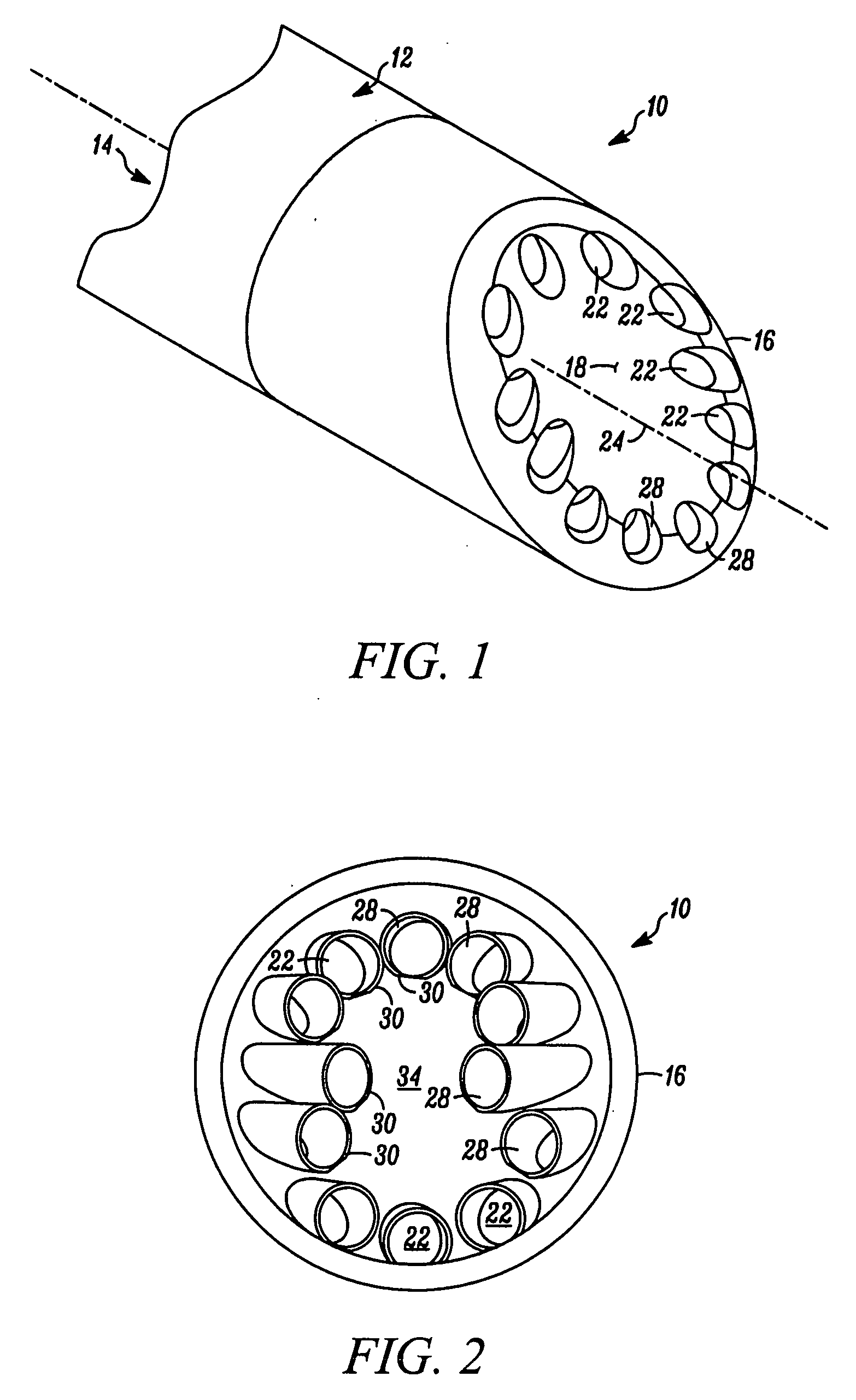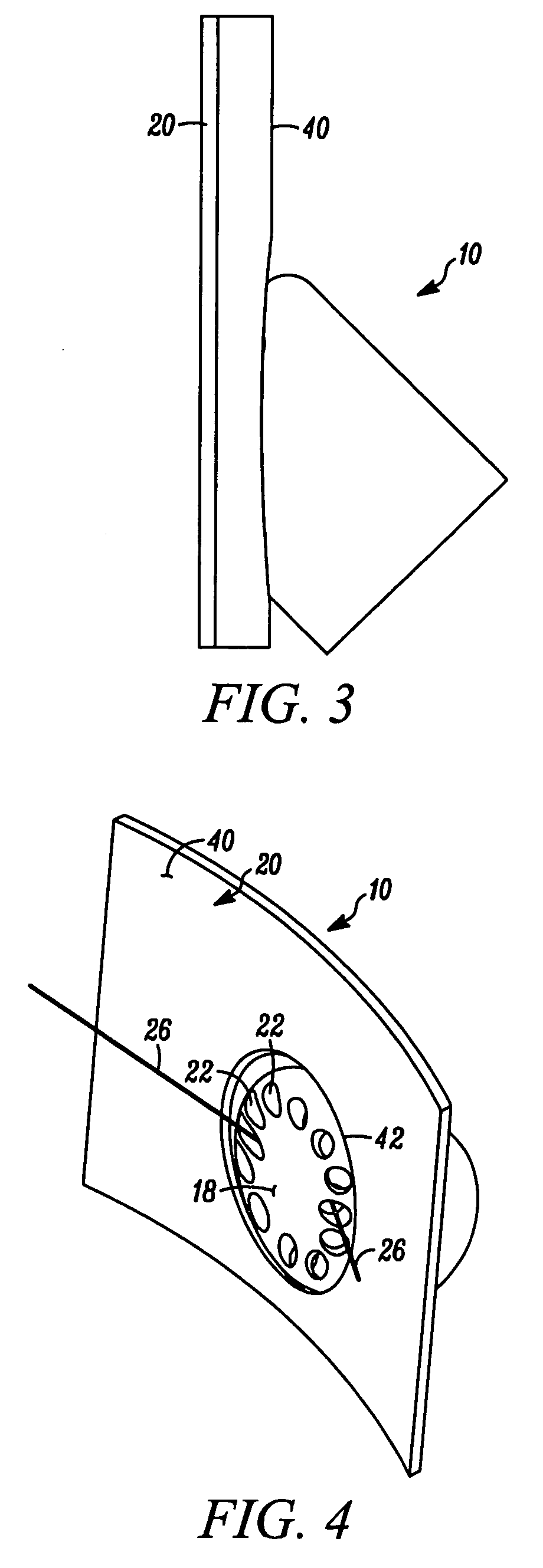Spray nozzles
a spray nozzle and spray technology, applied in the direction of lighting and heating apparatus, combustion types, chemistry apparatus and processes, etc., can solve the problems of inability to achieve mixing, inability to achieve complete cracking of hydrocarbon molecules, so as to reduce or minimize catalyst erosion, prevent erosion of the exterior surface, and improve homogeneous mixing
- Summary
- Abstract
- Description
- Claims
- Application Information
AI Technical Summary
Benefits of technology
Problems solved by technology
Method used
Image
Examples
Embodiment Construction
[0043] In FIGS. 1 through 8 a first embodiment of a nozzle of the present invention is indicated generally by the reference numeral 10. The nozzle 10 is for discharging first and second fluids in an atomized spray into a vessel 20 defining an internal contour. In one embodiment of the present invention the first fluid is oil, the second fluid is gas or steam, and the vessel is a catalytic cracking vessel. However, as may be recognized by those of ordinary skill in the pertinent art based on the teachings herein, the nozzles of the present invention are equally usable with any of numerous different types of fluids in connection with any of numerous different types of applications that are currently known, or that later become known.
[0044] The nozzle 10 comprises an inlet portion 12 defining at least one inlet conduit 14 for receiving at least one fluid and, in one embodiment, first and second fluids. An outlet portion 16 of the nozzle defines an exterior surface 18 that substantiall...
PUM
| Property | Measurement | Unit |
|---|---|---|
| diameter | aaaaa | aaaaa |
| diameter | aaaaa | aaaaa |
| temperatures | aaaaa | aaaaa |
Abstract
Description
Claims
Application Information
 Login to View More
Login to View More - R&D
- Intellectual Property
- Life Sciences
- Materials
- Tech Scout
- Unparalleled Data Quality
- Higher Quality Content
- 60% Fewer Hallucinations
Browse by: Latest US Patents, China's latest patents, Technical Efficacy Thesaurus, Application Domain, Technology Topic, Popular Technical Reports.
© 2025 PatSnap. All rights reserved.Legal|Privacy policy|Modern Slavery Act Transparency Statement|Sitemap|About US| Contact US: help@patsnap.com



